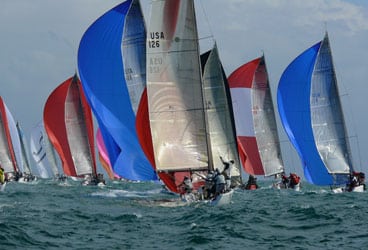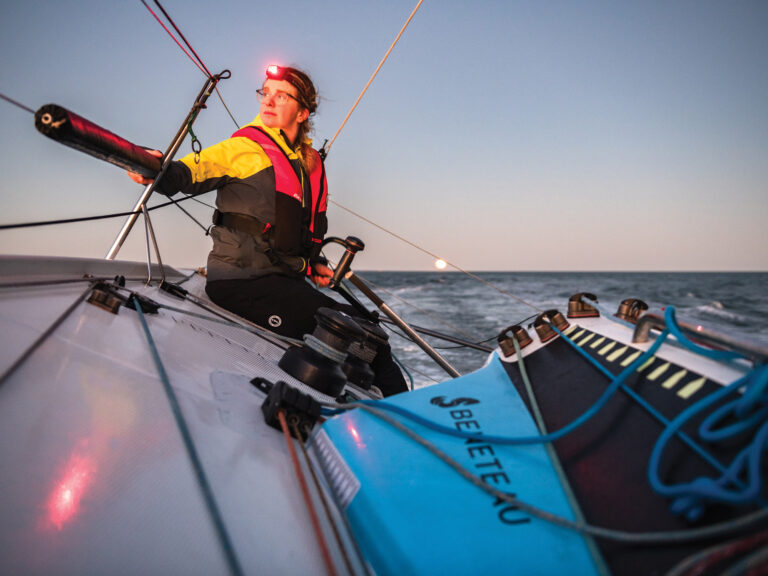
FTE Fleet Spotting
One advantage of having multiple fleets on a racecourse is being able to observe the classes starting before you—presuming you’re not first in line. My experience at this year’s Key West Race Week is a perfect example. On board the Farr 40 Barking Mad we were sharing our racecourse with three other classes, including the big IRC boats and the Melges 32s, and we used them as clues to what was happening on different parts of the racecourse—once to our demise, but I’ll get to that later.
Other fleets are especially useful in the pre-start. We were constantly observing them to identify which side of the first beat was favored. It was part of our pre-start homework, which also included spending an hour and a half on the racecourse before the start, working on identifying sides, boatspeed testing, and checking our tune. This tune-up time was also an opportunity to note the relative angles of other boats in the other classes. Knowing these angles later gave us a better understanding of headers or lifts as we observed other boats during the race.
Once I determine the end of the line at which I want to start, I will lurk at that end while the class that is starting is in sequence, watching in particular their final approach. If we are starting at the pin, for example, I will make sure I sail to leeward of the starting fleet to check the heading and pin-end layline. This will give everybody onboard an idea of how hard or easy it will be to get up to the line. Following the fleet up to the line and then peeling over to the pin in the last 20 seconds allows the bowman to check line sag and confirm any line bias. Inevitably, this means we’re running the motor up until the last minute, but it’s worth the hassle to gain this information.
Once the fleet in front is off and racing, I work toward the middle of the line, observing their angles and heel, as these are the best indicators of pressure and shift.
If the fleet ahead is a handicap fleet, it’s tough to gauge the favored side, so I try to identify boats that are similar in size and watch how the first crosses play out. In a venue like Key West, one side of the course can be a lot more favored than the other, so when I see a TP52 crossing a 70-footer I know the side the TP52 came out of is probably setting up much better.
Be careful though. There was one race in particular at Key West Race Week where observing the fleet ahead backfired on us. The fleet in front of us was showing a big right shift and I bit. Unfortunately, the last shift into the top mark was actually a big leftie, and what we were seeing was a no-wind hole.
The lesson here is that if you’re going to use other classes to gauge what’s happening up the course, make sure you understand the angles they sail. Look at the body positions of the crew—if the team is fully hiked and they’re bow down, they’re probably sailing a header. If you can see bodies to leeward and they’re bow down, it’s most likely they’re not in a header—they just don’t have any wind.
So remember, the class in front is a great indicator of things to come, and while it can be good input, it can also be a show-stopper. The best chances of success will come from doing your own pre-race homework then using the boats ahead to confirm a favored side.









